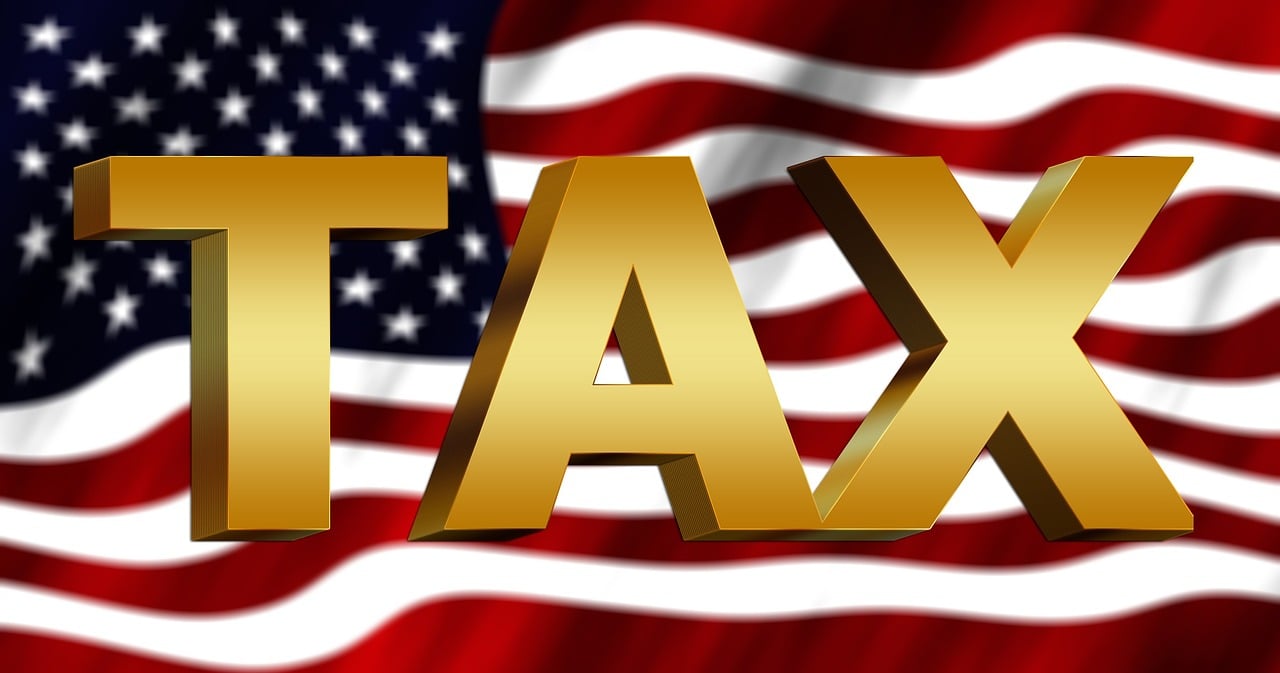Tax planning remains a vital focus for small business owners striving to maximize profits and minimize liabilities in a complex financial landscape. Navigating the ever-changing tax regulations for 2025 means understanding how your business structure influences taxes, leveraging deductions, and seizing credits designed to reward innovation and social responsibility. From the nuances of self-employment taxes to smartly managing inventory, each decision impacts your bottom line and shapes your company’s financial trajectory. With expert tools like Intuit QuickBooks and platforms like FreshBooks streamlining your record-keeping, and advice from professionals at firms like KPMG and EY, small business owners can approach tax season with confidence. Tax planning not only safeguards your business from surprises during filing but also empowers you to invest in growth thoughtfully, keeping you ahead in an increasingly competitive marketplace.
Understanding Business Structures and Their Tax Implications for Smart Tax Planning
Choosing the right business structure is foundational to effective tax planning for every small business owner. Structures such as Sole Proprietorship, LLC, S Corporation, and C Corporation each have unique tax treatments and compliance requirements in 2025. Understanding these differences is essential for optimizing your tax savings and protecting your personal assets.
Sole Proprietorship is the simplest form where owners and businesses are legally the same. You report business income on your personal return, but self-employment taxes of 15.3% apply to your net profits, covering Social Security and Medicare. While this structure is easy to establish, the self-employment tax burden can be significant.
An LLC (Limited Liability Company) adds flexibility by allowing taxation as either a sole proprietorship, partnership, or corporation, depending on elections made. In 2025, many LLCs elect S Corporation taxation to reduce self-employment taxes, paying owners a reasonable salary and distributing remaining profits. This structure also offers liability protection, insulating personal assets from business debts.
S Corporations are attractive for small businesses seeking to lower self-employment taxes. By splitting income between salary and distributions, owners can lower taxable income subject to Social Security and Medicare taxes, but must carefully follow IRS regulations on reasonable compensation. Moreover, S Corps limit shareholders to 100 individuals, usually requiring more regulatory paperwork and formalities.
C Corporations are taxed separately at a federal rate of 21% in 2025, which may be appealing for businesses planning to reinvest profits continually. However, owners face potential double taxation on dividends paid. Despite stricter paperwork and administrative burdens, C Corps benefit from broader deduction opportunities and lower tax rates on retained earnings.
- Evaluate your personal and business financial goals when selecting a structure.
- Consider potential tax savings from reduced self-employment tax with S Corp election.
- Factor in liability protection based on your business risks.
- Think about long-term growth and capital raising needs impacting your choice.
| Business Structure | Tax Treatment | Self-Employment Tax Impact | Liability Protection | Compliance Complexity |
|---|---|---|---|---|
| Sole Proprietorship | Pass-through to personal return | Full self-employment tax applies | No | Minimal |
| LLC | Flexible; can elect S or C Corp | Depends on election; often reduced in S Corp setup | Yes | Moderate |
| S Corporation | Pass-through; salary + distributions | Reduced by distribution portion | Yes | High |
| C Corporation | Separate entity; corporate tax at 21% | Not applicable to owners on salary | Yes | High |
Choosing the right structure involves balancing tax efficiency with compliance costs and business objectives. Utilizing accounting software such as QuickBooks or Xero can help track complex tax filings accurately. Additionally, it’s wise to consult tax firms like KPMG or EY (Ernst & Young) for guidance tailored to your specific circumstances.

Maximizing Deductions and Credits: Powerful Tools to Reduce Your Tax Bill
Effective tax planning centers on maximizing deductions and credits, significantly lowering taxable income and tax owed. For small businesses in 2025, a mindful approach to everyday expenses, vehicle use, retirement contributions, and credits can yield substantial savings.
Everyday expenses such as office supplies, utilities, advertising costs, and travel related to business are deductible, provided thorough documentation is maintained. If you use a home office exclusively for business, you can allocate a percentage of mortgage or rent, utilities, and property taxes as deductions—using either the simplified or regular IRS method depending on your preference.
Vehicle expenses can be deducted in two primary ways for 2025: the IRS standard mileage rate of 70 cents per mile or actual expenses including gas, repairs, insurance, and depreciation. Maintaining an accurate mileage log distinguishes business from personal use, ensuring full deduction benefits.
The Section 179 deduction remains a favored strategy, allowing immediate expensing of qualifying equipment and software purchases up to certain limits, instead of spreading depreciation over years. Paired with bonus depreciation provisions under the Tax Cuts and Jobs Act, businesses upgrading technology or acquiring machinery gain substantial upfront tax relief.
Contributions to retirement plans like a Solo 401(k) or SEP IRA not only prepare business owners for the future but also reduce taxable income today. For 2025, Solo 401(k) contribution limits increase to approximately $70,000, with catch-up contributions boosting totals to $77,500 for individuals aged 50 or above.
Tax credits directly reduce tax liability and differ from deductions, which lower taxable income. Noteworthy 2025 credits include:
- Research & Development (R&D) Tax Credit: Supports innovation efforts, ideal for companies engaged in new product development or process improvements.
- Work Opportunity Tax Credit (WOTC): Rewards employers who hire members of targeted groups, like veterans or individuals with disabilities.
- Small Business Health Care Tax Credit: Helps offset employee insurance premiums when coverage is offered through the SHOP Marketplace.
| Deduction/Credit | Description | Potential Tax Benefit | Eligibility Requirements |
|---|---|---|---|
| Section 179 Deduction | Immediate expense of equipment/software | Up to $1,160,000 in 2025 | Qualifying property placed in service |
| R&D Tax Credit | Offset costs of developing new products | Varies by business size and expenses | Innovative projects with qualified research |
| WOTC | Tax credit for hiring targeted employees | Up to $9,000 per eligible new hire | Employees from designated groups |
| Health Care Tax Credit | Help with insurance premiums | Up to 50% of premiums | Fewer than 25 employees, average wages < $56,000 |
Utilizing software like FreshBooks or Sage offers robust expense tracking, making it easier to identify deductible items. Meanwhile, services like H&R Block and TurboTax help prepare tax returns that maximize credits efficiently.

Minimizing Self-Employment Taxes and Planning Quarterly Estimated Payments Strategically
Self-employment taxes can represent a significant portion of a small business owner’s tax burden. At 15.3%, including Social Security and Medicare contributions, these taxes are unavoidable for many, but methods to mitigate their impact exist in 2025.
The Social Security tax applies only to the first $176,100 of net earnings, an increase from prior years, while Medicare taxes have no cap. Moreover, higher earners face an additional 0.9% Medicare surtax if net earnings exceed thresholds of $200,000 for single filers or $250,000 for joint filers.
A crucial strategy to lower self-employment taxes is electing an S Corporation status if your business structure permits. Paying a reasonable salary, with remaining profits distributed, diminishes the amount subject to full self-employment taxes. Contributing to retirement accounts like the Solo 401(k) alongside this approach compounds savings.
Quarterly estimated tax payments help avoid unexpected tax bills or IRS penalties. These payments, typically due in April, June, September, and January, require estimating income and associated taxes in advance. It’s wise to save a portion of monthly revenue—often 25% to 30%—in a separate account to cover these expenses without financial strain. Utilizing tax professionals or software tools ensures accuracy.
- Calculate estimated taxes based on last year’s figures and adjust for growth.
- Maintain comprehensive records of income and expenses monthly.
- Consider consulting services like Bench or Intuit to automate bookkeeping and tax reminders.
- Review your business structure’s tax impact annually to optimize tax liability.
Tax professionals affiliated with firms such as KPMG can provide personalized quarterly tax strategies, while software providers like TurboTax offer guided estimations to support compliance. Staying proactive in this area safeguards cash flow and preserves capital for growth.
Inventory Management and Family Employment: Tax-Savvy Strategies for Your Business
Beyond foundational tax planning, details like inventory accounting and employing family members can create notable savings. Managing inventory affects the cost of goods sold (COGS), a key variable in taxable income. Choosing between inventory methods such as FIFO (First In, First Out) or LIFO (Last In, First Out) can result in shifting taxable income, particularly relevant amid fluctuating costs.
For example, during inflationary periods, the LIFO method results in higher COGS by assuming newer, more expensive inventory is sold first, reducing profits and tax liability. However, IRS rules on inventory accounting are stringent, so collaborating with a financial advisor is crucial before changing methods.
Hiring family members can be an effective method for income shifting and tax reduction. Wages paid to a spouse or children are deductible as business expenses, and if structured properly, may reduce overall family tax burden by splitting income into lower tax brackets. Compliance with labor laws, reasonable pay, and proper payroll documentation are mandatory to stay legal.
- Inventory accounting method selection impacts your tax strategy — weigh pros and cons with your accountant.
- Employing family members requires careful planning and documentation but offers payroll tax savings.
- Ensure salaries align with fair market value to comply with IRS requirements.
- Use payroll services integrated with software like Sage or QuickBooks to streamline wage reporting.
By pairing diligent inventory management with family employment strategies, small business owners can optimize tax positions while supporting familial income distribution. More small business tax insights and legal startup considerations can be found at this resource.

Quarterly Tax Payment Calculator (2025)
Calculate estimated quarterly tax payments based on income, deductions, and credits in 2025.
Collaborating with Tax Professionals and Utilizing Small Business Tax Software
While DIY tax planning is possible, enlisting professionals offers peace of mind and uncovers savings potentially missed. Tax experts know the continually evolving tax codes, changes from legislation like the Inflation Reduction Act, and local tax nuances.
Working with certified public accountants (CPAs) or fiduciary advisors from firms like EY or KPMG not only helps optimize deductions and credits, but also ensures compliance, preventing costly audits or penalties. They tailor strategies such as retirement planning, entity structuring, and even climate-related incentives aligned with your business goals.
Complementing professional expertise, tax software tools remain invaluable. Platforms including Intuit TurboTax, H&R Block, and even cloud-based FreshBooks assist in real-time bookkeeping, estimated tax calculation, and facilitating electronic filing. These tools ease the burden while promoting timely filings and accurate returns.
- Consult a tax advisor annually to adjust strategies and stay ahead of regulatory changes.
- Use integrated software solutions for streamlined expense tracking and projections.
- Leverage professional insights for complex decisions like mergers, acquisitions, or major investments.
- Regularly review state and local tax obligations as they can differ substantially.
For tech-savvy small businesses, blending professional advice with software automation creates a comprehensive tax strategy. Discover how various solutions can enhance your business workflow and tax compliance at this technology insight hub.
Frequently Asked Questions About Small Business Tax Planning
What is the most tax-efficient business structure for small business owners?
There is no one-size-fits-all answer. S Corporations often offer valuable tax benefits by reducing self-employment taxes via salary and distributions. LLCs provide flexibility, and sole proprietorships offer simplicity. Evaluation depends on your individual business size, income, and growth plans.
Can I deduct my home office expenses on my taxes?
Yes, if a portion of your home is used exclusively and regularly for business activities. You can use either the simplified IRS deduction or calculate actual expenses proportional to your office space size, including utilities, rent, and property taxes.
What are quarterly estimated tax payments, and who needs to make them?
These are prepayments of income and self-employment taxes made four times a year. If you expect to owe more than $1,000 at tax filing, you generally must make estimated payments to avoid IRS penalties.
How can I reduce my self-employment taxes legally?
Electing S Corporation status to receive a reasonable salary and take additional earnings as distributions is effective. Also, contributing to retirement plans like Solo 401(k) reduces taxable income subject to self-employment tax.
Which tax credits are most beneficial for small businesses in 2025?
The Research & Development (R&D) Tax Credit, Work Opportunity Tax Credit (WOTC), and the Small Business Health Care Tax Credit offer significant savings. Eligibility depends on your business activities and employee demographics.


